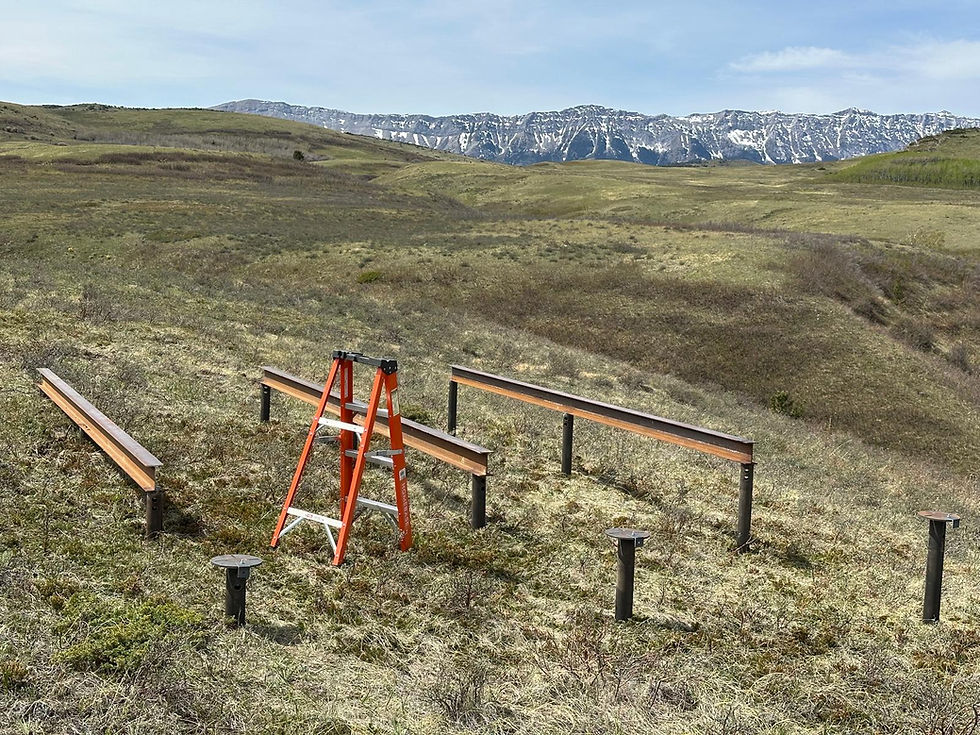Piling Foundations vs. Traditional Methods: Which Is Right for Your Project?
- accounts2243

- May 28
- 3 min read
When planning any construction project, one of the most critical decisions is choosing between modern piling foundations and traditional foundation methods. Each approach offers distinct advantages depending on your project's requirements, soil conditions, and budget. This comprehensive guide compares helical piles, driven piles, and other piling solutions against conventional concrete foundations to help you make an informed decision.

Understanding Foundation Types
Modern Piling Foundations
Piling foundations involve driving or screwing structural elements deep into the ground to reach stable soil layers:
Helical Piles (Screw Piles)
Steel shafts with helical plates
Installed by rotation (no vibration)
Immediate load capacity
Driven Piles
Precast concrete or steel
Installed using impact hammers
High load-bearing capacity
Micropiles
Small-diameter, high-strength
Ideal for restricted access sites
Used for underpinning
Traditional Foundation Methods
Conventional approaches that have been used for centuries:
Concrete Spread Footings
Poured-in-place concrete
Requires excavation and curing
Frost protection challenges
T-Shaped Foundations
Below-frost-line footings
Masonry or concrete walls
Time-consuming installation
Slab-on-Grade
Single concrete pour
Limited to stable soils
Vulnerable to frost heave
Key Comparison Factors
1. Installation Speed
Method | Installation Time |
Helical Piles | 1-3 days (typical home) |
Driven Piles | 3-5 days |
Concrete Footings | 7-14 days (plus curing) |
Why it matters: Piling foundations can reduce project timelines by 50-70% compared to traditional methods.
2. Load Capacity
Helical Piles: 10-200+ kips per pile (engineered for exact needs)
Driven Piles: 50-300+ kips per pile
Concrete Footings: Varies widely (often requires over-design)
Technical note: Piling foundations provide verified capacity through installation torque monitoring.
3. Soil Adaptability
Piling Advantages:
Work in expansive clay
Perform well in high water tables
Suitable for slopes and uneven terrain
Traditional Limitations:
Require stable surface soils
Need proper compaction
Vulnerable to frost heave
4. Cost Comparison
Factor | Piling Foundations | Traditional Methods |
Material Costs | Higher | Lower |
Labor Costs | Lower | Higher |
Equipment Needs | Specialized | Standard |
Total Project Cost | Often 20-30% less | Typically higher |
Cost-saving insight: While pile materials cost more, the reduced labor and time often make piling more economical overall.
5. Long-Term Performance
Piling Foundations:
50+ year design life
No settling or cracking
Corrosion-resistant materials
Traditional Methods:
30-50 year lifespan
Potential for cracks over time
Frost heave vulnerability
When to Choose Piling Foundations
Ideal Scenarios
✔ Difficult soil conditions (clay, sand, high water table)✔ Tight construction schedules✔ Environmentally sensitive sites✔ Projects requiring minimal vibration✔ Areas with deep frost lines (like Calgary)
Project Examples
Residential: Custom homes on slopes, deck supports
Commercial: Solar farms, telecom towers
Industrial: Bridge abutments, heavy equipment pads
Repairs: Foundation stabilization, structural lifting
When Traditional Methods May Suffice
Appropriate Cases
✔ Stable, well-draining soils
✔ Small-scale projects with minimal loads
✔ Budget-conscious builds where time isn't critical
✔ Areas with shallow frost lines
Project Examples
Small garden sheds
Light-duty patios
Interior partition walls
Temporary structures
Making the Right Choice: Decision Factors
Soil Conditions (Get a professional geotechnical report)
Project Timeline (How quickly do you need to build?)
Load Requirements (What weights must the foundation support?)
Budget Constraints (Consider total project costs, not just materials)
Future Needs (Will the structure expand or change use?)
Why Calgary Builders Choose Piling
Our local challenges make piling particularly advantageous:
6-8 foot frost depth requires deep foundations
Expansive clay soils demand specialized solutions
Short construction seasons benefit from year-round installation
Frequently Asked Questions
1. Are piling foundations more expensive than concrete?
While material costs are higher, piling typically saves 20-30% on total project costs due to faster installation and reduced labo
2. Can piling be used for existing structure repairs?
Yes, helical piles are ideal for underpinning and stabilizing settled foundations with minimal disruption.
3. How deep should piles go in Calgary?
All piles must extend below the 6-8 foot frost line, with additional depth for heavier loads.
4. Do piling foundations require maintenance?
No - properly installed piles require zero maintenance throughout their 50+ year lifespan.
5. Which is better for seismic zones?
Piling foundations generally outperform traditional methods in earthquake-prone areas due to their deep anchorage and flexibility.
Conclusion
The choice between piling foundations and traditional methods ultimately depends on your specific project requirements. While conventional approaches may suffice for simple projects in ideal conditions, modern piling solutions offer superior performance, speed, and long-term value for most Calgary construction projects - particularly in challenging soils or tight timelines.



